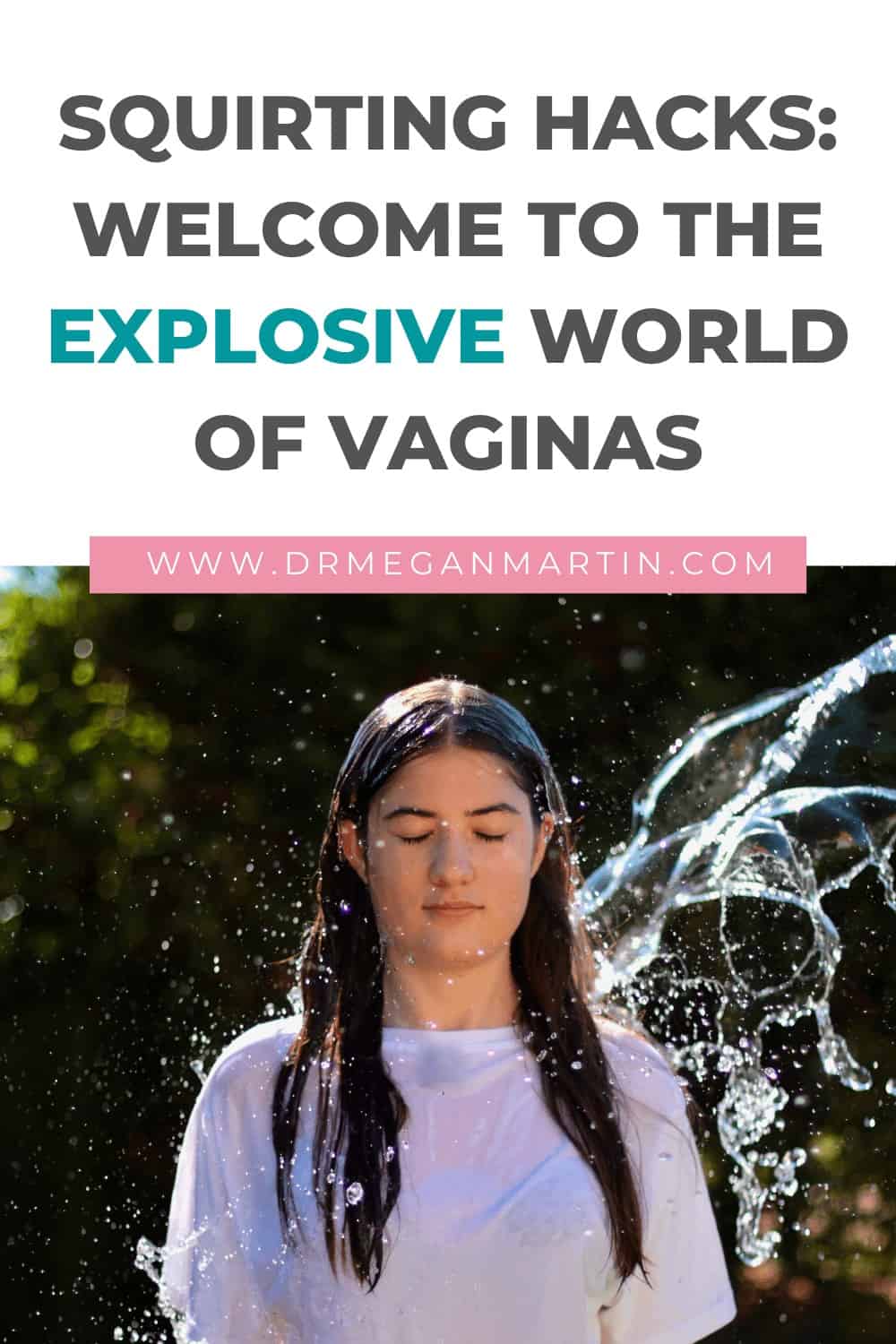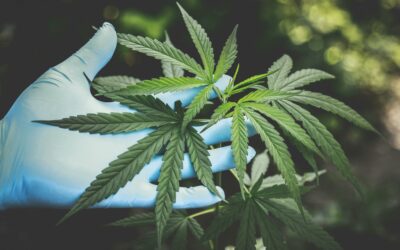Squirting, gushing, female ejaculation – whatever you want to call it, we’ve got the answers!
Have you ever wondered whether you could squirt? Maybe you’ve seen it in porn and don’t believe it’s a real thing. Well, I’m here to tell you that it exists, and it is very much real!
Just a quick disclaimer
Before we start I just want to say that while we will be referring to female ejaculation, we are talking about everyone with a vulva. Because as we know, not all people with vulvas are women, and not all women have vulvas.
What is squirting?
Female ejaculation and squirting, refers to the expulsion of fluid from the genitals during sex. It is usually associated with orgasm, but not always. And while female ejaculation and squirting has been talked about for over 2000 years, there are still only a few credible scientific studies on the subject. This leaves us with contradictory results and no good answers.
Questionnaire surveys have been done and have shown that 40-54% of women have experienced an expulsion of fluid at orgasm, whether that be squirting or ejaculation.
The surveys also showed that women have a range of various reactions to this phenomenon, such as embarrassment, surprise, and shame, especially when they first discover it. So many women assume that they have urinated all over the bed!
This is not true. Let’s clear up some of these myths so that we can do away with the shame and embarrassment.
What does the fluid in female ejaculation or squirting actually consist of?
Vaginas are magical, and produce a whole range of various fluids. It may be easier to understand these fluids if we break down each type so that we know exactly what we are talking about.
Vaginal lubrication
Let’s start with the one everyone knows about, your vaginal lubrication that occurs during sexual arousal. This lubrication is formed during arousal, when the vagina engorges with blood.
This engorgement around the vagina, literally pushes the blood plasma from the blood out through the vaginal walls in the form of a transudate. This lubricates the entire vaginal canal.
Female ejaculation
The next type of fluid, and what we are talking about today is female ejaculate. This is a thick, white, milky fluid that is released during orgasm.
This fluid is released from the Skene’s glands which are located on either side of your urethra, and is also referred to as the female prostate. (As a side note, I don’t like to use the term “female prostate”, don’t get me started with that one).
So this fluid is only a few milliliters. It is not the large amount of fluid that you typically see in porn. This makes it different from squirting, which is a much larger amount. More on that later.
This female ejaculate contains PSA, or prostate-specific antigen, which is a special substance only secreted by the Skene’s gland or prostate. The fluid does not contain any urine.
One theory about these glands is that the larger these glands are, the more ejaculate fluid they can produce and contain. This may be the reason why some women have been naturally able to ejaculate all their lives (sometimes totally involuntarily). For those with smaller glands, they may have never ejaculated.
Squirting
Before reading this post, when you thought of female ejaculation, you were probably actually thinking about squirting.
The two are actually not the same thing. Squirting is different in that the fluid actually comes from the urethra during orgasm, and can contain urea, creatinine and uric acid.
These three components are actually found in urine, which makes sense considering it is coming out of the urethra. But studies have shown that this fluid is still distinctly different from actual urine.
This fluid come out in a much larger volume and is considered by some to be a very diluted form of urine. It is very watery, clear, transparent and has no smell or taste.
It can come out in gushes in various volumes from 15ml to 110ml, but some people have reported squirting much larger amounts.
In a French study done in 2014, for each study participant, they performed 3 ultrasounds. One after emptying their bladder, one just before squirting when their sexual excitement is at its maximum, and one just after squirting.
On the ultrasounds, they demonstrated that the bladder filled up rapidly during sexual stimulation, much faster than it usually would with normal urine production.
After squirting, they measured the urine in the bladder with the ultrasound again, and the bladder was completely empty.
This confirmed that the fluid expelled during squirting does come from the bladder.
But the question remains, where does that fluid come from if it is not urine. We still don’t have a answer for that yet.
Coital incontinence
The fourth and final type of fluid that can be expelled during sex is what we call coital incontinence. In this case, the fluid expelled IS actually urine. This is not normal.
If you leak urine during penetration or orgasm, it may be a sign that you have other urinary problems.
The best way to know whether you are squirting or have coital incontinence, is by paying attention to what is happening outside of the bedroom. If you are struggling with stress incontinence (urine leaking during laughing, coughing or sneezing) then there is a problem and you need to talk to your doctor about it.
If you don’t have these problems outside of the bedroom, then you can rest assured that the fluid you are squirting is not urine.
Is there any advantage to female ejaculation or squirting?
There are theories that hypothesize that women who can ejaculate, ejaculate antimicrobial secretions into their urethra.
This can prevent UTIs, especially sex-induced UTIs. Not only will the fluids wash out any bacteria in the urethra, the antimicrobial (or antibacterial) properties will help kill them off.
How does ejaculation or squirting work?
Female ejaculation usually occurs with stimulation of the G-spot. The G-spot is an area on the front or anterior part of the vaginal wall, facing your belly. It is located 2-5cm into the vagina. With sexual arousal, it can swell and feel spongy with small ridges.
This area is where the clitoris, urethra, Skene’s glands and vagina meet and can be very sensitive for some people. Stimulation of this area can result in an intense orgasm, and sometimes ejaculation or squirting.
Does ejaculation = more intense orgasm?
Female ejaculation may be connected to more intense orgasms, but as you can imagine, pleasure is very difficult to quantify. Pleasure is highly subjective.
For those who do ejaculate, they report a feeling of intense pleasure, even if not always an orgasm. And a few people say that is more uncomfortable than pleasurable.
When surveyed, almost 80% of the women questioned said that their sex life had improved after they started squirting.
When asked what it feels like, these women reported a feeling an intense release, a head rush, a full body tingling, and some have a full on emotional release afterwards.
Some said that they feel very vulnerable and tender afterwards, while others said they can feel high or ecstatic, or completely drained and dehydrated afterwards.
Sounds like a rollercoaster of emotions!
Don’t let this discourage you though, whether you ejaculate or not, it’s totally okay. At the end of the day it says nothing about how good your sex life is!
I’ve never ejaculated, does this mean something is wrong with me?
All people with vaginas have the necessary anatomy or equipment to squirt. But some women seem to be squirters and some women are not. We still don’t know why that is.
A major reason could be that you have all the necessary anatomy, but the rest of your body and mind aren’t on board with it. If you are uncomfortable or anxious, you won’t be able to squirt.
It could be that for some people, stimulation of their G-spot feels amazing because it is so sensitive. Others may have G-spots that aren’t that sensitive so they don’t feel much at all.
Some say this may be due to the positioning of the crura of the clitoris which wrap around the vagina. And that’s okay! That’s totally normal. If your G-spot isn’t as sensitive, it may just take more time and patience to get there and learn how to ejaculate.
Hacks to get you squirting
Why do you want to squirt?
Before you start, make sure you know why you want to squirt or ejaculate. Is it just to please your partner? Are you doing it just as a performance? Those reasons are not going to be enough. This has to be all about you and your pleasure.
Make sure everyone is comfortable
Before you start, it’s important to talk to your partner about it and make sure everyone is on board and comfortable with it. Make sure you create a safe space to explore. If you are not into it, or anxious, it will not work.
You cannot force the squirting out of her like porn would have you believe!
Protect your sheets
Make sure you protect your sheets with a plastic sheet or large towels to soak up the fluids. This will help ease your mind about making a mess.
And you don’t want to have to sleep in the wet spot afterwards!
Empty your bladder
Make sure you go to the bathroom to urinate first before you start. This will help you feel more comfortable, knowing that it isn’t urine that’s going to come out.
Set aside at least an hour for sexy stimulation
Remember that this experience is all about exploration, it’s not a race. Take your time and go slowly. Prepare yourself to be there for at least an hour, especially in the beginning when you aren’t used to it. As you get more practice, it should become easier.
Support your pelvis
Put a pillow under your butt so that your pelvis is tilted upwards, this will help you and your partner hit the G-spot a little easier.
Start with 30 minutes of foreplay – No penetration!
Make sure there is LOTS of foreplay, don’t just go straight into penetration. She needs to be fully aroused first. This stage can last for up to 30min, yes, 30 minutes with no penetration! Make sure she is ready and begging for it.
Use the “come hither” technique
When you are ready to start, you can insert 1 or 2 fingers into the vagina, or you can use a G-spot dildo specially designed for hitting the G-spot.
Using your fingers, you will stimulate the upper, anterior wall of the vagina, about 2-5cm deep. When you put your fingers inside, you should look for a spongy, wrinkly area in that spot. That’s where you want to be.
Start slowly and softly, using a “come hither” movement with your fingers. You may feel the area start to swell up a little. This is a good thing.
This not the time to get creative and try fancy movements, stick with the come hither movement, curling the fingers up towards the bladder in a repetitive motion.
Repetition is key here. Find the spot that feels good and stick to it.
If you like, you can also add additional oral play to stimulate the clitoris while you are busy doing this. But some people say this can be too distracting. Find what works best for you.
You may start to feel like you need to pee
After some time, you may feel like you need to urinate, this can be a sign that you are almost there and heading in the right direction.
This is the time to remember that you have already emptied your bladder beforehand so you do not need to pee, and this will not be urine. This will be ejaculate or fluids building up for squirting.
It may be difficult to relax when you reach this point, especially if you are not used to it. Make sure you take deep breaths and focus on relaxing and letting go. Give yourself permission to let go and lose control if necessary.
Don’t let the worry about peeing on your partner freak you out, like we said, this fluid will not be urine.
But if it helps you relax, maybe you need to mentally accept that it might be urine and let go anyway. Discuss this with your partner beforehand so you know that you are both comfortable with whatever happens. This can make a huge difference to your anxiety!
Enjoy the sensations and get into it
As the pressure builds, you can rock your hips or squeeze your Kegel muscles in a rhythm, squeezing your partners fingers with your vagina. At this point you can try firmer pressure on the G-spot if you like.
Don’t clamp down or hold back
As the orgasm builds, your initial response will be to clamp down and hold back. This will stop any ejaculation from happening! Make sure that you keep breathing deeply, focus on relaxing and giving in to the sensations. Do not hold your breath.
Push yourself beyond what you feel you are capable of, but if it’s painful, that is not normal and you need to stop. If it just feels different or unfamiliar, lean into it.
When you are ready to squirt, bear down and push with your Kegel muscles
If you feel the orgasm coming, you can bear down, pushing down your Kegel muscles to release the ejaculate or squirt. Don’t stop the G-spot stimulation until you are done and can’t stand the stimulation anymore.
You will need to physically tell your partner to stop or push their hands away when it becomes too much. This extra time allows for longer orgasms – and even multiple orgasms!
With direct clitoral stimulation, you may need to take a break after you orgasm because the clitoris becomes too sensitive. With G-spot stimulation, it is different, you don’t tend to have that extremely sensitive sensation after orgasming, and you can carry on.
You may not get to squirt the first time, and that’s okay!
Just keep practicing and doing what feels good.
Once you have mastered this method, you can move on to try penetrative sex with a penis or strap on. Certain positions can make it easier to squirt, like having the woman on top, or trying doggy-style.
In Summary
Women’s bodies are capable of so many extraordinary things that even science doesn’t know how to keep up. And while the jury is out on where exactly the fluids are coming from, we do know that it’s not urine, and that squirting is very much a real phenomenon.
Remember, if you don’t squirt, please don’t try to measure up or compete with the imaginary sexual standard you’ve set for yourself. Regardless of whether your orgasms are completely dry or soak the whole bed, you are normal!
And most importantly, remember that you aren’t missing out on mind blowing orgasms if you don’t squirt.

References
- Pastor, Z, Chmel, R. Differential diagnostics of female “sexual” fluids: a narrative review. International Urogynaecology Journal. 2018;29(1): 621–629.
- Pastor Z. Female ejaculation orgasm vs. coital incontinence: a systematic review. J Sex Med. 2013 Jul;10(7):1682-91. doi: 10.1111/jsm.12166. Epub 2013 May 1. PMID: 23634659.
- S. Salama, F. Boitrelle, A. Gauquelin, C. Lesaffre, N. Thiounn, P. Desvaux, Que sait-on des femmes fontaines et de l’éjaculation féminine en 2015 ?, Gynécologie Obstétrique & Fertilité, Volume 43, Issue 6, 2015, Pages 449-452, ISSN 1297-9589, https://doi.org/10.1016/j.gyobfe.2015.04.012.
- Moalem S, Reidenberg JS. Does female ejaculation serve an antimicrobial purpose? Med Hypotheses. 2009 Dec;73(6):1069-71. doi: 10.1016/j.mehy.2009.07.024. Epub 2009 Sep 18. PMID: 19766406.
- Cartwright R, Elvy S, Cardozo L. Do women with female ejaculation have detrusor overactivity? J Sex Med. 2007 Nov;4(6):1655-8. doi: 10.1111/j.1743-6109.2007.00541.x. Epub 2007 Jul 18. PMID: 17634057.
- Rodriguez FD, Camacho A, Bordes SJ, Gardner B, Levin RJ, Tubbs RS. Female ejaculation: An update on anatomy, history, and controversies. Clin Anat. 2020 Jul 18. doi: 10.1002/ca.23654. Epub ahead of print. PMID: 32681804.
- Rabinerson D, Horowitz E. [G-spot and female ejaculation: fiction or reality?]. Harefuah. 2007 Feb;146(2):145-7, 163. Hebrew. PMID: 17352286.





0 Comments